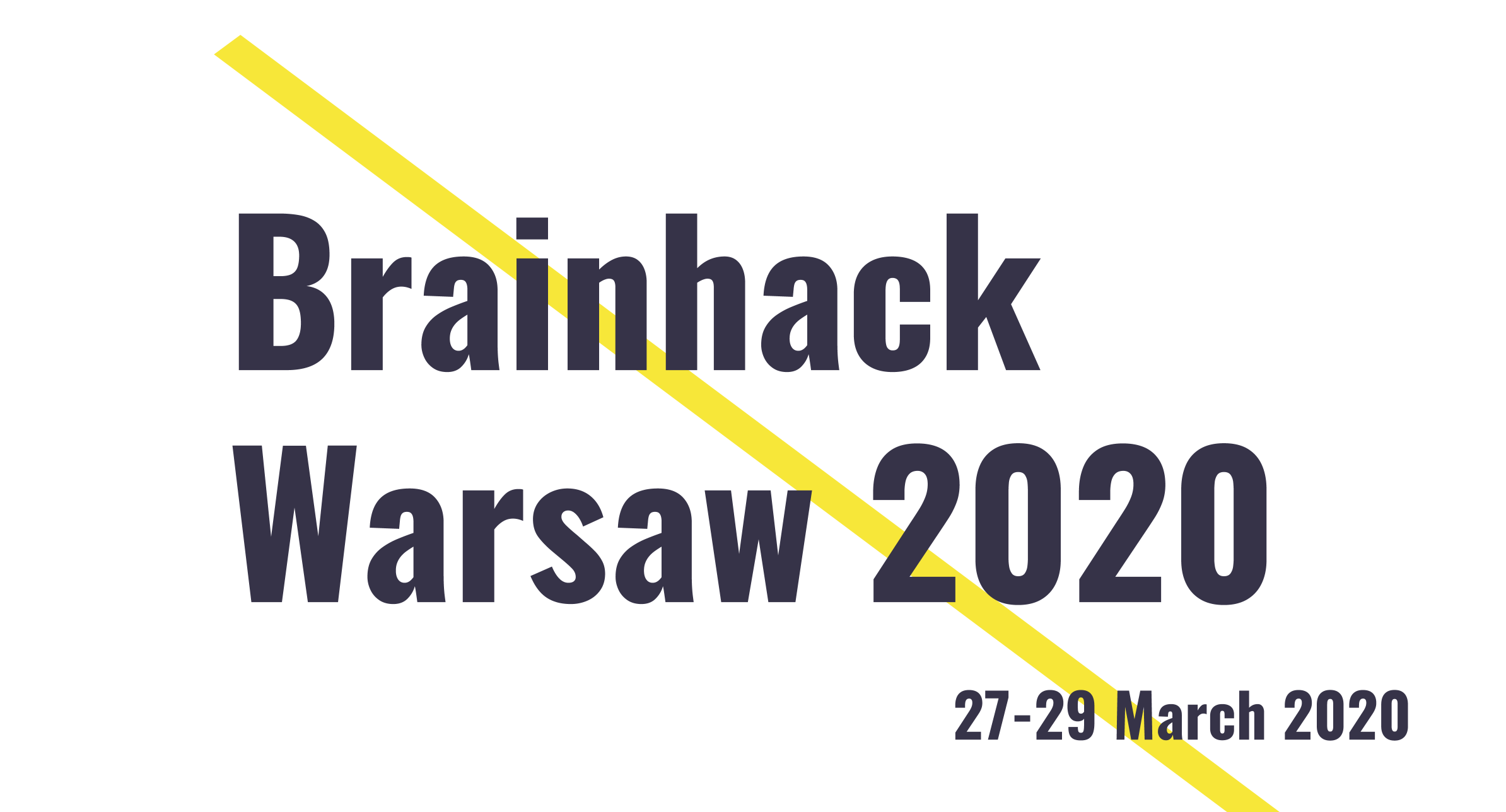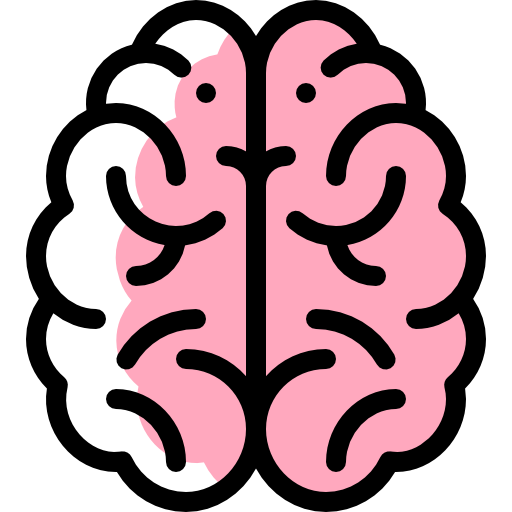
Important notice!
We regret to inform you that due to the closing of the University of Warsaw during the Coronavirus epidemic, we are for now cancelling Brainhack Warsaw 2020. All the events until 30th of April 2020, including classes and lectures, are to be withdrawn. Remember - safety always comes first, and once we fight the epidemic I am sure we will all be hungry and ready to brainhack like never before!
We want to thank each and every one of you, we know that you put a lot of work to come here. We really appreciate your commitment and it will not go to waste. We will do our best to make Brainhack Warsaw 2020 take place as soon as possible. If current project leaders decide to submit their projects again, participants who have signed up to them will have priority to participate. So keep your eyes open wide for the near future!
We are very sorry for the situation and if you have any questions please contact us. Until then, keep warm and take care of yourself and your health. In those times the best we all can do is be loving and caring towards one another.
With all the brainhack love,
Brainhack Warsaw 2020 Committee
About Brainhack Warsaw 2020
On the last weekend of March 2020, the third edition of Brainhack Warsaw will take place. During this three-day event dedicated to students and PhD students, we will work in teams on neuroscience-related projects.
The aim of the event is to meet new, enthusiastic researchers, make new friendships in academia, learn, share the knowledge on data mining, machine learning and brain research, but also promote open science in the spirit of the whole Brainhack community (Craddock et al., 2016). Attendees of various backgrounds are welcome to join!
By submitting your own, genuine research project, you can gain a priceless leadership experience as you will manage a group of researchers at our three-day event. Go ahead, let your creativity bloom and share your idea with us!
Deadline for project proposals: 12.01.2020
Announcement of projects: 20.01.2020
Participant registration starts: 21.01.2020
Deadline for participant registration: 15.03.2020
Please send all the related questions at the mailing address: brainhackwarsaw@gmail.com
Past Editions
This is the third time that Brainhack Warsaw is happening. We are proud that out initiative has gone so far and happy to share with you what have happened before. You can read about all the projects conducted before, engage with our previous guests and also get a glimpse of what you might be expecting this year.
Remember that reading all about what we experienced before might be a great start on your yourney with Neuroinformatics, Machine Learning and Brain Sciences. Reading about previous editions you can also be inspired to prepare Brainhack Warsaw 2020 project idea.
We believe that the drive for exploration, curiosity and reaching out is what makes our community a great place for everyone. See what it was and is like to be a part of this initiative and do not hesitate to contact us in case of any further questions conserning previous editions of our hackathon conference.
Click on our brain and find out more about Brainhack Warsaw!
Venue
Brainhack will take place at the University of Warsaw, Faculty of Physics, Pasteura 5, 02-093 Warsaw, Poland.
Speakers
Social Physiology for Precision Psychiatry
Abstract: To understand human cognition in its functioning and dysfunctions, it is necessary to combine multiple scales of observation and related disciplines, from the molecular level in genetics to the behavioural level in psychology. In psychiatry, diagnosis, prognostic evaluation and choice of treatment thus require the integration of multiple pieces of information and their temporal evolution, particularly for neurodevelopmental disorders. In this presentation, I will argue that recent advances in integrative neuroscience and computational biology finally provide all the conceptual and methodological tools to encompass these multiple scales and thus develop the necessary social physiology for precision psychiatry.
Bio: Guillaume Dumas is a research fellow in the neuroscience department of the Institut Pasteur and coordinates the Social Neuroscience for Therapeutic Approaches in Autism (SoNeTAA) platform in the child psychiatry department of the Robert Debré Hospital. His research combines human-human and human-machine interactions with neuroimaging and bioinformatics to study our biological, behavioural, and social dynamics. He is also involved in numerous projects at the interface between science and society, in particular through the advocacy of open science in political and research institutions (co-founder of HackYourPhD) and the defence of citizens’ rights (invited expert at the UN).
The Endeavour for Biomarker Research
Abstract: It has become increasingly apparent that there are abundant links between cognitive deficits and mental health disorders. However, progress towards a comprehensive understanding of these relationships has remained slow. In part, this is believed to be a reflection of limitations in the current diagnostic classification systems. Epidemiologic, genetic and neuroimaging studies alike have struggled with a lack of specificity in findings (i.e., an inability to map a single phenomenon to single diagnosis), leading many to question the validity of diagnostic boundaries drawn based upon clinical observation rather than biology. Compounding these challenges is the tendency of researchers to focus on a single disorder at a time when collecting data, which limits trans-diagnostic analyses. These realities have encouraged calls for a paradigm shift in clinically-focused cognitive neuroscience research from the restricted study of specific facets of cognition in specific diagnostic groups, towards the ideal of examining all facets in all individuals. The National Institute of Mental Health has taken a leading role in these efforts by establishing the Research Domain Criteria (RDoC) Project as a framework for forging multidimensional characterizations of mental illness. A central aspect of this framework is the integration of information across multiple levels (e.g., from genetics to self-report), and the recognition of human neuroimaging and neurophysiology measures as potentially providing key dimensions.
Bio: Prof. Dr. Nicolas Langer is head of Methods of Plasticity Research at Neuropsychology, Cognitive Psychology, and Neuroscience part of the Department of Psychology at the University of Zurich. His research focusing on human brain & behavioral plasticity (working memory, decision-making, processing speed, and intelligence) and the development of new research methods like machine learning. He is also involved in the modeling of anatomical and functional networks in longitudinal data and early detection of specific learning disabilities (eg. dyslexia) and ADHD. His research also includes comorbidity of mental disorders in children and adolescents. In his works, he tries to integrate different neuroscientific methods (multi-modal imaging).
Projects
–
Project 1: Mentally Disordered Agents FULL
Project 2: Making sense of sounds: what can we learn from neural activity in primary auditory cortex FULL
Project 3: Game controlled by SSVEP paradigm using Blinker device (https://braintech.pl/blinker) FULL
Project 4: False positives visualized - an explorable exploration
Project 5: Talking with Machine Learning models using chatbots
Project 6: Reduction of Psychiatric Multimorbidity in a Large Pediatric Sample using EEG and MRI FULL
Project 7: Validating quantitative susceptibility mapping (QSM) at 3T and 9.4T FULL
Project 9: Enhancing SSVEP detection with frequency hopping FULL
Project 1: Mentally Disordered Agents
Authors: Paweł Pierzchlewicz
Psychiatric disorders are one of the major concerns of the XXI century. Depression, anxiety, addiction and others are becoming significantly more prominent in our society. Yet their mechanisms remain elusive. With the growing variety of computational tools we are beginning to be able to model them, hoping that this will provide a better understanding and allow to overcome the problem. One of these methods is reinforcement learning, which gives insight into the process of decision making.
Reinforcement Learning introduces a playground for testing hypotheses, through building tailored environments, agents perform certain behavioural tasks. It stems from the mathematical description of dopamine, the reward neuromodulator. This allows to model how the brain chooses and values certain actions to achieve set goals. Computational Psychiatry has been using reinforcement learning to figure out what might be causing various mental illnesses. A potential hypothesis could be that the policy (the probability of taking a certain action in a given state) has fallen into the trap of a local maximum of the return function (the total reward received).
This project aims to hijack the established playground enabling testing even the craziest ideas. Let’s throw the agent into an environment where it is constantly surrounded by temptations, and cheer when it manages to overcome them. Maybe place it in a harsh environment where everything is terrible and frightening and observe how he decides to hide away from the world. We will attempt to connect the computational results with underlying neuronal functions. Hopefully by the end, we will gain a deeper understanding of mental illnesses and come up with a neuroscientific hypothesis.
Our main goal will be to explore how the environment influences the behaviour of the agent. We can also examine if changing the way the agent learns about the environment might cause suboptimal behaviour. A basic model for the agent and environment will be provided and we will work on extending them to achieve desired results.
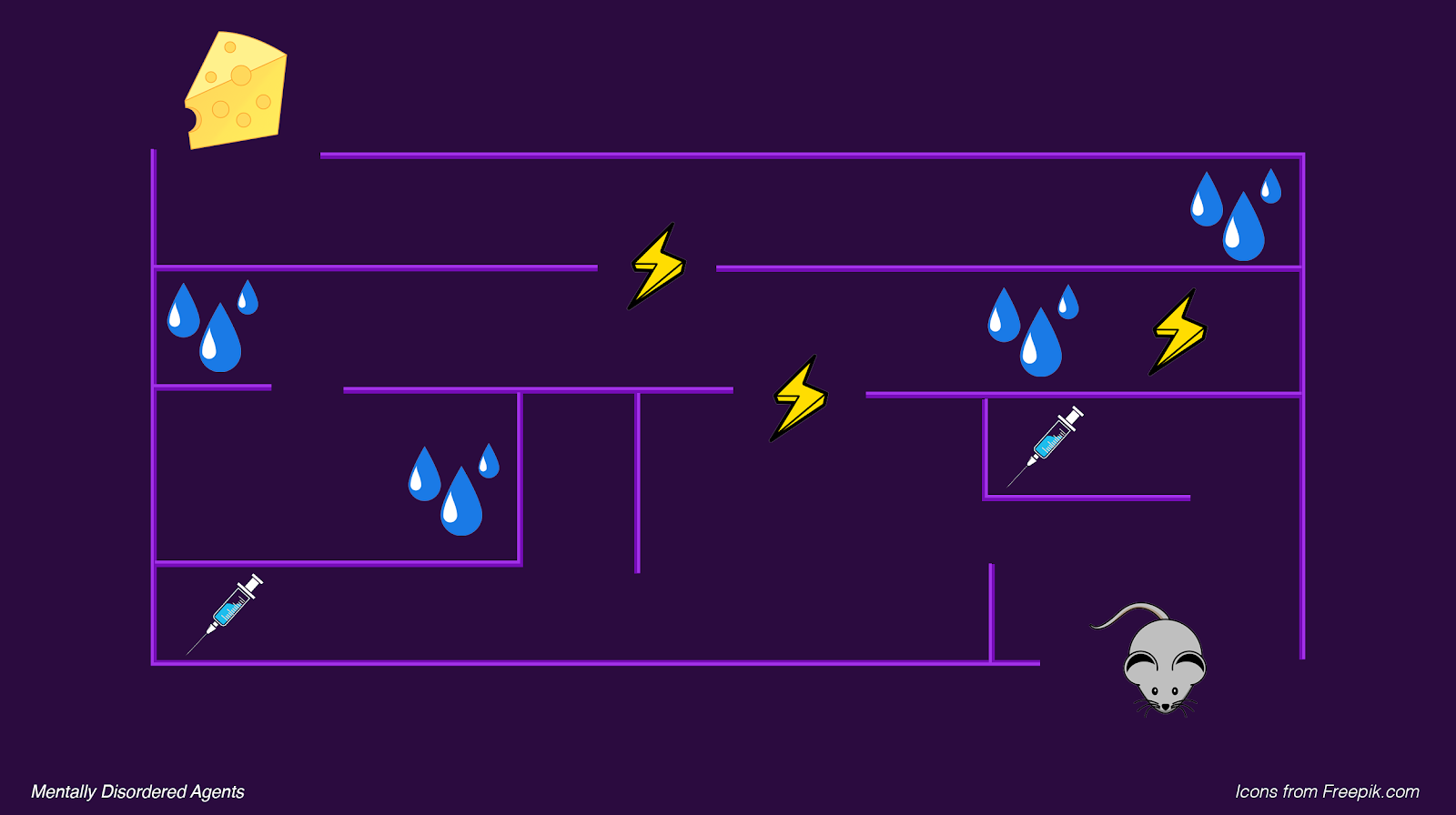
Programming languages that are going to be used in the project:
Python
A list of requirements for taking part in the project (education level / English level /all the information you consider important for participants)
- Conversational English with ease of reading scientific papers.
- Reinforcement Learning Basics (preferred)
- Experience with some deep learning framework (Keras, Tensorflow, PyTorch)
- Linear Algebra
What participants gain/learn from this project:
- Reinforcement Learning Basics
- Computational Psychiatry
- Coding Skills
- Insight into mental disorders
A list of 1-5 key papers / online materials summarising the subject:
- Adams, R. A., Huys, Q. J. M., & Roiser, J. P. (2016). Computational Psychiatry: Towards a mathematically informed understanding of mental illness. Journal of Neurology, Neurosurgery and Psychiatry, 87(1), 53–63. https://doi.org/10.1136/jnnp-2015-310737
- Dayan, P. (2009). Dopamine, Reinforcement Learning, and Addiction.
- Redish, A. D., Jensen, S., & Johnson, A. (2008). A unified framework for addiction: Vulnerabilities in the decision process. Behavioral and Brain Sciences, 31(4), 415–487. https://doi.org/10.1017/S0140525X0800472X
- Sharp, P. B., & Eldar, E. (2019). Computational Models of Anxiety: Nascent Efforts and Future Directions. Current Directions in Psychological Science, 28(2), 170–176. https://doi.org/10.1177/0963721418818441
- Mkrtchian, A., Aylward, J., Dayan, P., Roiser, J. P., & Robinson, O. J. (2017). Modeling Avoidance in Mood and Anxiety Disorders Using Reinforcement Learning. Biological Psychiatry, 82(7), 532–539. https://doi.org/10.1016/j.biopsych.2017.01.017
Preferred maximal number of participants: 8
How many non-programming participants can join you during your project, what profession can they be?
2 biologists/psychiatrists/psychologists, 1 artist
Project 2: Making sense of sounds: what can we learn from neural activity in primary auditory cortex
Authors: Magdalena Sołyga, Elisabetta Messina
How our brain is making sense of sounds is definitely a basic question in auditory neuroscience. Whether strength, timing, adaptation, correlation or tuning of neural activity in the brain reflect useful auditory information is far from our understanding. While performing multi-unit extracellular recordings, we collect an enormous amount of neural activity data, containing both spiking activity and the local field potentials recorded simultaneously from tens of neurons and many cortical layers.
The aim of the project is to explore the number of questions which can be answered while analyzing a set of electrophysiology data acquired from two primary auditory cortices in mice (Solyga & Barkat, 2019). Participants would have freedom to test how properties of auditory neural responses change for sounds with different parameters, in different auditory regions and layers and try to decide which of the parameter reflects according to them the most useful information on auditory stimuli.
Through the project, you will gain a basic understanding of acquiring and analyzing multi-unit electrophysiological data and get a chance to test your own hypothesis. This project aims to emphasize the sheer amount of information we can get from one set of recordings and that electrophysiological data should be widely shared to exploit them fully.
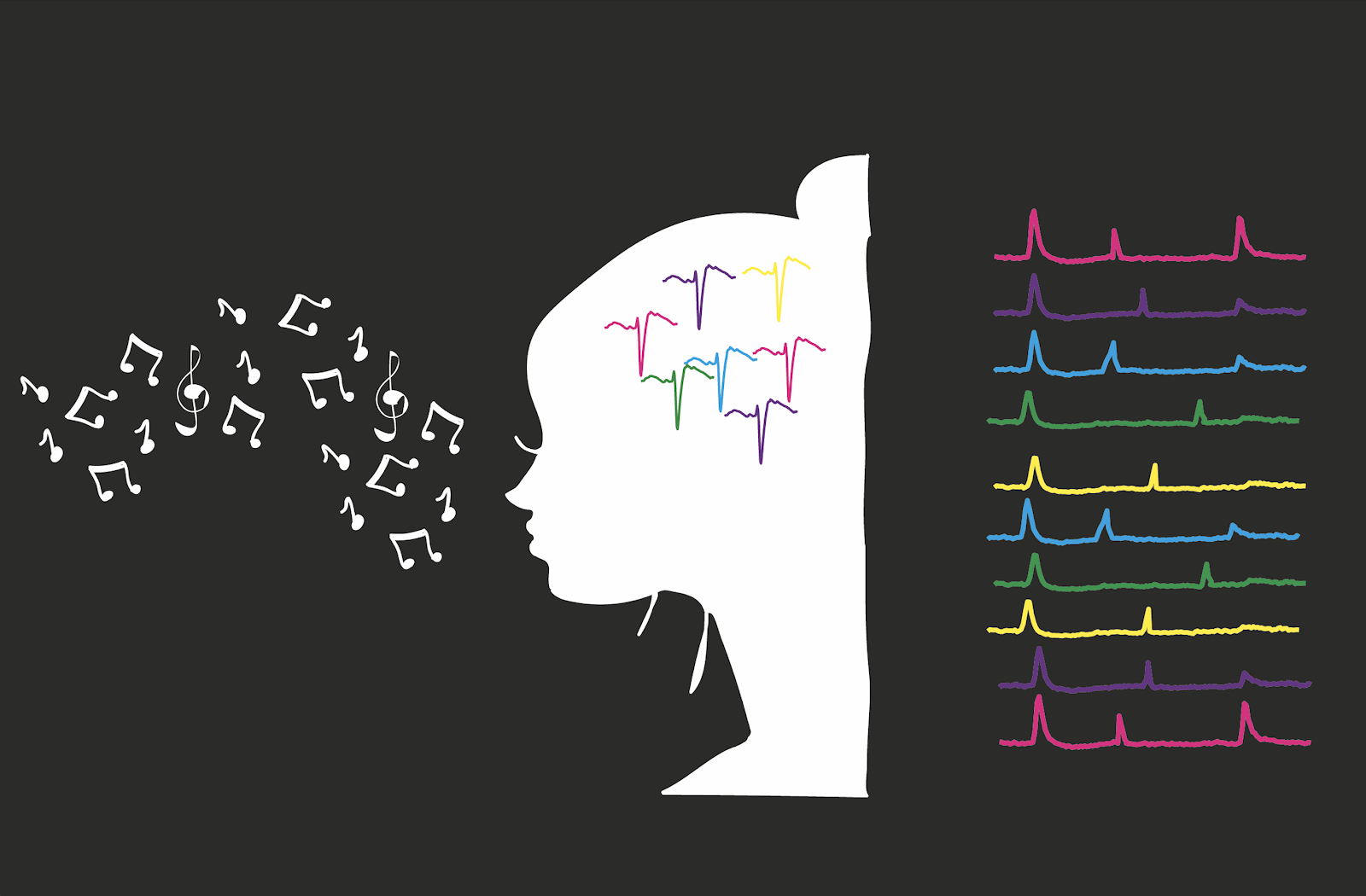
Programming languages that are going to be used in the project:
Matlab/Octave
A list of requirements for taking part in the project (education level / English level /all the information you consider important for participants)
- BSc program, or higher
- English: good
- Programming languages / other competences: MATLAB®
- Knowledge related to auditory cortex/hearing will be advantage
What participants gain/learn from this project:
- Basic understanding of experimental approaches in auditory neuroscience
- Experimental and analysis flow of multi-unit extracellular recordings
- Hands on session with data analysis
- Testing their own hypothesis
- If you are a beginner in electrophysiology data analysis you will learn how to handle data to represent basic neural response’s parameters. If you have already experience, you can discover totally new facts about sounds processing in mouse auditory cortex.
A list of 1-5 key papers / online materials summarising the subject:
- Sołyga, M., & Barkat, T. R. (2019). Distinct processing of tone offset in two primary auditory cortices. Scientific reports, 9(1), 1-12.
- King, A. J., Teki, S., & Willmore, B. D. (2018). Recent advances in understanding the auditory cortex. F1000Research, 7.
- Guo, W., Chambers, A. R., Darrow, K. N., Hancock, K. E., Shinn-Cunningham, B. G., & Polley, D. B. (2012). Robustness of cortical topography across fields, laminae, anesthetic states, and neurophysiological signal types. Journal of Neuroscience, 32(27), 9159-9172.
Preferred maximal number of participants: 6
How many non-programming participants can join you during your project, what profession can they be?
Musicians or biologists (max 2)
Project 3: Game controlled by SSVEP paradigm using Blinker device https://braintech.pl/blinker
Authors: Maciej Pawlisz, Marian Dovgialo
Brain Computer Interface allows for control of a machine or a computer without input of your muscles, by sheer force of your mind. There are different forms of BCI’s, some of them use imagined hand movements some measure how relaxed or tense user is, some can distinguish imagined speech of a few sounds and some use users attention to different stimuli. Steady State Visual Evoked Potential based BCI use visual stimuli flickering at different frequencies to detect which one the user is paying the most attention to. This allows for example for a paralysed user in complete locked in state to mentally focus their attention on different flickering stimuli to show intent of control. Usually implemented versions of this BCI use 2-5 LED flickering at frequencies around 8-12 Hz. We present you 2 new devices to experiment with:
- State of the art 24-bit 8 channel wireless EEG headset with water/saline based electrodes
- Custom backlight display with 320 programmable backlight segments, allowing for accurate localised dimming and blinking at given frequencies. Frequency resolution 0.01 Hz, customisable blinking patterns: sine, square wave or user provided shape buffer In this project team of 3-6 will tackle a challenge to control an old school adventure game like Beneath a Steel Sky (freeware on https://www.scummvm.org/games/#sky) using SSVEP based BCI using novel stimulation display. If successful, the project could be expanded to control the whole OS desktop which could upgrade assistive technologies for people suffering from paralysis or trapped in a locked in state.
Programming languages that are going to be used in the project:
Python, JavaScript
A list of requirements for taking part in the project (education level / English level /all the information you consider important for participants)
- Mandatory:
○ Knowledge in Python programming, Linux
○ Laptop running x86_64 bit Linux with Python 3.6 (for example Ubuntu 18.04.3 LTS)
○ Laptop with HDMI output
○ Be ready to get your hair wet - Optional:
○ Knowledge of GUI programming: PyQt, PySide, PyGame or other
○ Familiarity with machine learning, digital signal processing
○ Knowledge of human input device events simulation - getting screenshots, simulating keypresses and mouse clicks from Python
What participants gain/learn from this project:
- Hands on experience of real-time analysis of EEG signals
- Assistive technology design
- BCI Design
A list of 1-5 key papers / online materials summarising the subject:
- https://braintech.pl/bci/?lang=en
- https://braintech.pl/bci/?lang=en#bci-ssvep
- Development of an SSVEP-based BCI spelling system adopting a QWERTY-style LED keyboard Han-Jeong Hwang, Jeong-Hwan Lim, et al.
- Development of a practical high frequency brain–computer interface based on steady-state visual evoked potentials using a single channel of EEG Saba Ajami et al.
- http://scikit-learn.org/stable/modules/linear_model.html#lasso
Preferred maximal number of participants: 6
How many non-programming participants can join you during your project, what profession can they be?
None
Project 4: False positives visualized - an explorable exploration
Authors: Piotr Migdał, Katarzyna Kańska
Classification errors take place everywhere - from machine learning classifiers, through medical decisions, to juridical verdicts. Very often the options are not symmetric and there is a trade-off on how we balance different kinds of errors (e.g. sentencing an innocent person vs letting free a guilty one).
In this project, we develop interactive explanations of different error measures (e.g. precision and recall) with concrete examples, showing:
- What do they represent,
- Where they are insightful or misleading.
The project will have three main parts (you may take part in one, two or all of these activities):
- Writing interactive stories with concrete examples
- Designing data visualizations
- Developing a Vue.js application
As a result, we want to extend a project “Which ML are you?” https://github.com/stared/which-ml-are-you which can be a powerful tool for learning how to use and interpret common information retrieval metrics.

Programming languages that are going to be used in the project:
JavaScript
A list of requirements for taking part in the project (education level / English level /all the information you consider important for participants)
Please send via email your solution to one of the following problems:
- Develop a small Vue.js application with a visualization of a ROC curve,
- Present shortly an example of your choice where precision-recall trade-off can occur and explain what consequences each option may cause. Propose a way of narration and corresponding problem/data visualization design, e.g. (in a form of a drawing). Example interesting areas: health, crime, security.
What participants gain/learn from this project:
- Presenting scientific content in an accessible way
- Developing a Vue.js application for interactive data visualization
If you decided to apply for this project please consider that you are asked to make one of the proposed problems. Along with the registration through our form, please prepare the given application and send this solution to your potential project leaders at: pmigdal@gmail.com
Your email communication should then consist of:
- Your solution to one of the problems
- Information about which place on your desired project list this project has (is it your first or for example second choice)
A list of 1-5 key papers / online materials summarising the subject:
- Tom Fawcett, An introduction to ROC analysis, https://people.inf.elte.hu/kiss/13dwhdm/roc.pdf
- Problem explanation: https://victorzhou.com/blog/intro-to-random-forests/
- Understanding ROC curves: http://arogozhnikov.github.io/2015/10/05/roc-curve.html
- Visualization inspiration: http://www.r2d3.us/visual-intro-to-machine-learning-part-1/
- More examples: https://explorabl.es/
Preferred maximal number of participants: 12
How many non-programming participants can join you during your project, what profession can they be?
Everyone is welcome to join unless they complete one of the required preliminary projects.
Project 5: Talking with Machine Learning models using chatbots
Authors: Michał Kuźba
Machine Learning models are often blackboxes, meaning their predictions are hard to interpret and trust. There’s an ongoing research in the are of interpretable / explainable Machine Learning.
Why don’t we talk to the model to ask and understand more about the decisions it makes? We can use existing chatbot frameworsk such as Dialogflow, plug in a blackbox ML model and interact with it via conversation.
Imagine ML model being interrogated for doing biased, wrong or weird decisions.
What can we do?
- Train some interesting models (medical, financial, legal, including biases, etc.)
- Create a dialogue system as an interface for the model
- Work on explaining model decisions
- Find interesting questions to be asked for the model
- Anything that comes to your mind and we might do using chatbot as an interface for the Machine Learning model (any ideas are welcome)
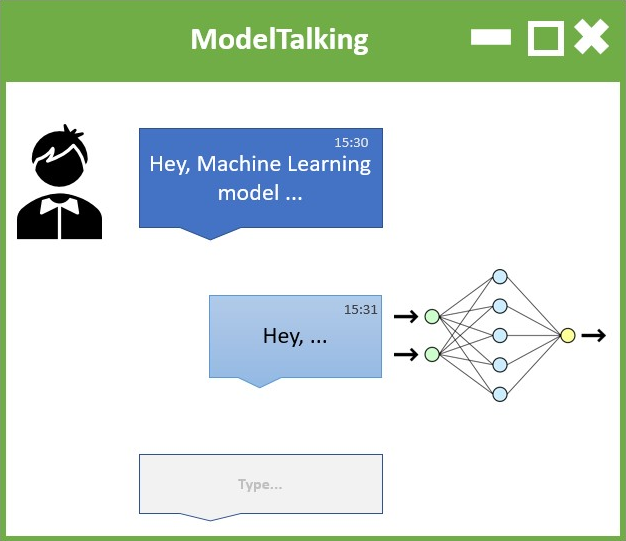
Programming languages that are going to be used in the project:
Python, R, JavaScript
A list of requirements for taking part in the project (education level / English level /all the information you consider important for participants)
- English: good
- The ability to train a simple Machine Learning model will be helpful.
What participants gain/learn from this project:
- Opportunity to participate in the process of developing a chatbot - from design to programming, testing, deploying and talking to it
- Opportunity to do something creative and fun
A list of 1-5 key papers / online materials summarising the subject:
- Book about interpretable ML https://christophm.github.io/interpretable-ml-book/
- Poster summarizing a project in that area [https://github.com/kmichael08/kmichael08.github.io/blob/master/XAIbot__poster-v1.pdf](https://github.com/kmichael08/kmichael08.github.io/blob/master/XAIbot__poster-v1.pdf)
- Link to an existing chatbot https://kmichael08.github.io/
- https://arxiv.org/abs/1706.07269
Preferred maximal number of participants: 10
How many non-programming participants can join you during your project, what profession can they be?
Cognitive science, Human-computer interaction, social sciences, philosophy…. But not limited to. Anyone is welcome if they feel like working on the project. Anyone that would love to be able to ask questions to ML models :) Ideally there is at least few engineers, but definitely not limited to.
Project 6: Reduction of Psychiatric Multimorbidity in a Large Pediatric Sample using EEG and MRI
Authors: Nicolas Langer
Psychiatric disorders are among the most common and debilitating illnesses across the lifespan and begin usually prior to age 24, which emphasizes the need for increased focus on studies of the developing brain. The majority of existing studies have focused on differentiating between children with an isolated psychiatric disorder and typically developing children. However, this line of research does not reflect the real-life situation (over 75% of children with a clinical diagnosis have multiple psychiatric disorders), in which a clinician has the task to choose between different diagnoses and/or the combination of multiple diagnoses (multimorbidity). Furthermore, most of the previous studies employ traditional univariate statistics on relatively small samples.
Multivariate machine learning/AI approaches have a great potential to overcome the limitations of this approach. The present proposal offers a unique large-sample dataset that provides a wide array of different psychiatric developmental disorders. The goal is to classify the multimorbidity of children and adolescents based on resting electroencephalography (EEG) and neuroanatomical measures (T1-weighted images, Diffusion MRI),, demographics, and cognitive behavioral data. We believe that a community driven effort to derive predictive markers from these data using advanced AI algorithms can help to improve the diagnosis of psychiatric developmental disorders.
Programming languages that are going to be used in the project:
Python, R, Matlab/Octave
A list of requirements for taking part in the project (education level / English level /all the information you consider important for participants)
- Knowledge in neuroscience and psychology
- Practice in data science and statistics
What participants gain/learn from this project:
- Identifying biomarkers for psychiatry
- Learning about limitations of neuroanatomical and neurophysiological measures in psychiatry
A list of 1-5 key papers / online materials summarising the subject:
- Woo et al. 2018: Building better biomarkers: brain models in translational neuroimaging
Preferred maximal number of participants: 7
How many non-programming participants can join you during your project, what profession can they be?
psychologist with knowledge about developmental disorders
Project 7: Validating quantitative susceptibility mapping (QSM) at 3T and 9.4T
Authors: Anastasia Lado, Elisa Tuzzi, Gisela Hagberg
Quantitative susceptibility mapping (QSM) is an experimental MRI method that can help quantify the absolute concentration of iron and calcium in tissues. QSM uses the information from MRI phase images to estimate the magnetic susceptibility of the underlying tissue. Magnetic susceptibility is an intrinsic physical property of the tissue. It reflects the magnetic field induced in the tissue when placed in an external magnetic field. Due to its ability to quantify the magnetic properties of the tissue QSM can distinguish between diamagnetic (e.g., calcifications) and paramagnetic (e.g., iron) sources.
The main goal of QSM is to calculate the magnetic susceptibility distribution (quantitative map of susceptibility). However, the calculation of the susceptibility from the measured MRI phase is an ill‐posed inverse problem. Many possible susceptibility distributions can generate a virtually identical MRI phase. Another complication in QSM is the presence of strong background fields induced by the air-tissue boundary, whose susceptibility difference is much stronger than that of the local sources. An additional challenge is that the phase that develops up to the echo time is “wrapped” into a range of 2π radians. Phase wraps need to be removed in order to reveal the underlying phase distribution of interest.
To address these issues several processing steps are required:
- Background field removal.
- Phase unwrapping.
- Field-to-source inversion. Several algorithms exist to calculate each of these processing steps. In our project, we want to validate these processing algorithms on phantom data with known underlying sources of the magnetic susceptibility.
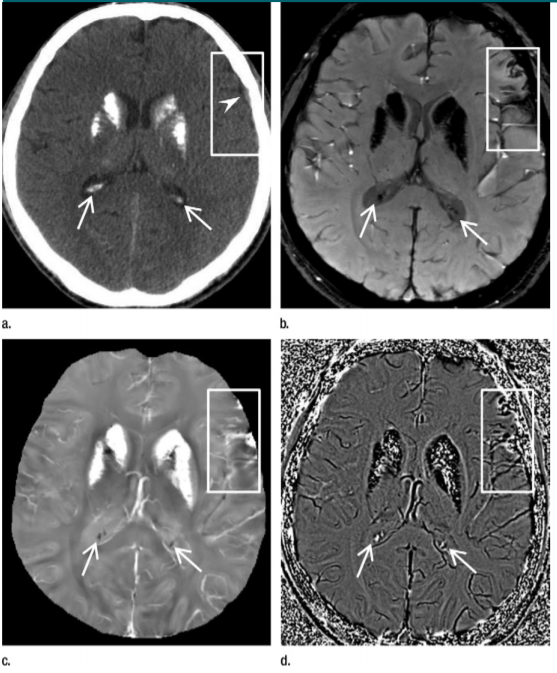
Programming languages that are going to be used in the project:
Python, Matlab/Octave
A list of requirements for taking part in the project (education level / English level /all the information you consider important for participants)
- Good command of English
- Basic programming skills in matlab or python (at least one month of use)
- Some prior knowledge about MRI is a plus, but not a must
What participants gain/learn from this project:
- Basics about MRI data processing
- The theoretical basis of quantitative susceptibility mapping
- Tools for computing quantitative susceptibility maps
A list of 1-5 key papers / online materials summarising the subject:
- Wang, Y. and Liu, T. (2015), Quantitative susceptibility mapping (QSM): Decoding MRI data for a tissue magnetic biomarker. Magn. Reson. Med., 73: 82-101. doi:10.1002/mrm.25358
- Schweser, F., Robinson, S. D., de Rochefort, L., Li, W., and Bredies, K. ( 2017) An illustrated comparison of processing methods for phase MRI and QSM: removal of background field contributions from sources outside the region of interest. NMR Biomed., 30: e3604. doi: 10.1002/nbm.3604.
- https://en.wikipedia.org/wiki/Quantitative_susceptibility_mapping
- Liu C, Wei H, Gong NJ, et al. Quantitative susceptibility map-ping: contrast mechanisms and clinical applications. Tomography2015;1:3-17.
Preferred maximal number of participants: 6
How many non-programming participants can join you during your project, what profession can they be?
artists, medical specialists (+1-2, not included in the overall participant count)
Project 8: Researching the relationships between voting patterns and geographically bonded environments of voters
Authors: Jan Skorupiński, Michał Drygajło
Environmental neuroscience points to significance of subject’s surroundings to its brain and behaviour. The impact of the environment is undoubtedly visible, not only in everyday life, eg. the influence walk in park versus walk in the city’s streets or school performance impacted by CO2 in the room but also in more profound situations like by predicting election results by looking on open source demographic data (see case of https://fivethirtyeight.com/). Research by Huang et al. (2013) shows the link between the sense of invulnerability and attitude towards socially excluded. Kanai R at el. (2011) found that political attitudes has a counterpart in brain structure.
Psychologist know very well that one of the main downsides of research based on questionnaires is the necessity to mask the real purpose of questioning line. The difference between political polls and actual results of given elections are a good example of what may happen if the auto-presentation strategies are interfering. The advantage of an actual voting results is the obvious sense of anonymity of the voters.
In this project we would like to look for possible correlation between the voting results and the environment represented by the geographical location. By having collected several voting results we can look for changes in time of politician’s support and then look for significant changes in the environment. We will look at ways to translate the politicians alliances and/or their political program with the everyday life surrounding of their voters environment.
Programming languages that are going to be used in the project:
Python
A list of requirements for taking part in the project (education level / English level /all the information you consider important for participants)
- Conversational English
- Ability to do basic data transformations in python (pandas)
- Some experience in Machine Learning (NLP, classical ML algorithms such as regression, - random forest, basic understanding of NN)
- Programming skills in Python, Tensorflow or PyTorch
What participants gain/learn from this project:
exploratory data analysis, spacial analysis
A list of 1-5 key papers / online materials summarising the subject:
- Kanai R., Feilden T., Firth C., Rees G., Political Orientations Are Correlated with Brain Structure in Young Adults, Current Biology 21, 677–680, April 26, 2011, DOI:10.1016/j.cub.2011.03.017
- Huang J.Y., Ackerman J.M., Bargh J.A., Superman to the rescue: Simulating physical invulnerability attenuates exclusion-re
- Dlated interpersonal biases. Journal of Experimental Social Psychology 3, Vol. 49, Issue 3, 349-354 (2013) DOI:10.1016/j.jesp.2012.12.007 3) https://en.wikipedia.org/wiki/FiveThirtyEight
Preferred maximal number of participants: 10
How many non-programming participants can join you during your project, what profession can they be?
up to 3 people from Sociology, Political Science, Geographic Information Specialist
Project 9: Enhancing SSVEP detection with frequency hopping
Authors: Tomasz Necio, Zuzanna Lewandowska
When human eye is periodically stimulated (e.g. by a flashing light), the brain generates an electric signal with the same frequency as that of the stimulus. We call this phenomenon steady-state visually evoked potentials (SSVEP). These potentials can be relatively easily detected with electroencephalography (EEG). This makes them a viable tool for building brain-computer interfaces. An example setup might look like the following: a user in an EEG headset is looking at a computer screen where active elements are illuminated with diodes flashing at various frequencies between 30–50 Hz (too fast to become a nuisance but still detectable with EEG). When the user focuses his attention on a particular element, the associated SSVEP dominates the EEG signal, and thus the computer is able to detect which element was chosen by the user. Frequency hopping (FH) is a method of transmitting radio signals where instead of using a single carrier frequency, the transmitter alternates between several frequencies in pre-determined order, known also to the receiver of the transmission. FH is widely used e.g. in Bluetooth and Wi-Fi. Some of the advantages that FH offers are resistance to narrowband interference, and ability to share frequency band with conventional transmissions.
In this project we want to investigate whether frequency hopping can be applied to SSVEP stimulation to enhance its performance as a brain-computer communication tool compared to a typical setup, where each active element is illuminated by a diode flashing with fixed frequency. If time allows, we will also evaluate configurations mixing the conventional and FH transmission. The workload will be divided into several tasks, which can be done in parallel, and which will engage a diverse set of participants’ skills. One of the tasks is to program a microcontroller (or, alternatively, a Raspberry Pi) to control a set of diodes used to invoke SSVEP. Another is to perform measurements with an EEG headset, and the last task is to analyse and visualise the data to see if there is any meaningful difference in performance between the two approaches. Project is open to people without prior experience in neuroscience or professional programming.
Programming languages that are going to be used in the project:
Python, C/C++
A list of requirements for taking part in the project (education level / English level /all the information you consider important for participants)
Basic C or basic Python programming knowledge. Basics of data or signal analysis. Willingness to be an EEG measurement subject.
What participants gain/learn from this project:
Enhanced C/Python programming and data analysis skills, experience with EEG measurements, and with brain-computer interfaces
A list of 1-5 key papers / online materials summarising the subject:
- https://ieeexplore.ieee.org/abstract/document/726253
- http://yadda.icm.edu.pl/yadda/element/bwmeta1.element.baztech-ec940f00-2f27-45b1-8569-3b8304261353
Preferred maximal number of participants: 8
How many non-programming participants can join you during your project, what profession can they be?
1-2 people who can make EEG measurement
Preliminary schedule
|
Friday, 27th March 2020 |
Saturday, 28th March 2020 |
Sunday, 29th March 2020 |
|
|
9:00 |
Brain hacking |
Brain hacking |
|
|
10:00 |
Brain hacking |
Brain hacking |
|
|
11:00 |
Brain hacking |
Brain hacking |
|
|
12:00 |
Lunch |
Brain hacking |
|
|
13:00 |
Brain hacking |
Lunch |
|
|
14:00 |
Brain hacking |
Preparing final presentations |
|
|
15:00 |
Opening, welcome drinks |
Talk from: Guillaume Dumas |
A round of 10-min final presentations |
|
16:00 |
5-min blitz project opening presentations |
Tea-time break |
|
|
17:00 |
Break for further drinks |
Brain hacking |
Goodbye drinks |
|
17:30 |
Ignite talk: Nicolas Langer |
||
|
18:00 |
Brain hacking |
||
|
18:30 |
Brainstorming |
||
|
19:00 |
Brainstorming |
Dinner |
|
|
20:00 |
Brainstorming |
Brain hacking |
|
|
21:00 |
Late-night social |
Brain hacking |
|
|
22:00 |
Brain hacking |
||
|
23:00 |
Brain hacking |
Participant Registration
Registration form is available here
Registration will take place in three rounds and there will be small registration fee (to cover the catering during the event) for the project participants:
- EARLY -> 21.01 - 07.02 -> 100 PLN / 25 EUR
- REGULAR -> 08.02 - 21.02 -> 120 PLN / 29 EUR
- LATE -> 22.02 - 15.03 -> 135 PLN / 33 EUR
PLEASE NOTE: the first round is paid after qualifying, second and third immediately
If you have any questions or queries about fees, please write to us: brainhackwarsaw@gmail.com
Payment details
- Bank account: Bank Millenium 77 1160 2202 0000 0000 6084 9264
- IBAN: PL 77 1160 2202 0000 0000 6084 9264
- SWIFT/BIC: BIGBPLPW
- Transfer title: Brainhack Warsaw 2020
For your convenience we prepared a list of nice and friendly hotels where you get a special Brainhack Warsaw discount:
- Moon hostel - 10% discount with the password of “brainhack warsaw”
- Lwowska hostel - 15% discount with the password of “Brainhack”, rooms for 4, 6 and 7 persons, free coffee, tea, wifi and bedding, well-equipped kitchen (dishes, fridge, induction hob, microwave oven)
- Mish Mash Hostel - 85 PLN/person for rooms for 2 and 4 persons with private bathroom in the rooms or for rooms for 3 people with private bathroom outside the rooms and 170 for DBL rooms, each room has a kettle, coffee, tea, sugar, hairdryer and in the public area there is a fridge and microwave and the password is: “brainhack”
- Soundgarden Hotel - 5% discount with the password of “Brainhack2020”, here is the instruction how to make a reservation using the code or you can just go to this link
- Ibis Reduta - Single room with breakfast - PLN 179 or double room with breakfast (one double bed or two separate beds) - PLN 218 with the password of “Rezerwacje Brainhack”, the offer is valid until February 28, 2020
Commitee
The Brainhack Warsaw 2020 committee:
